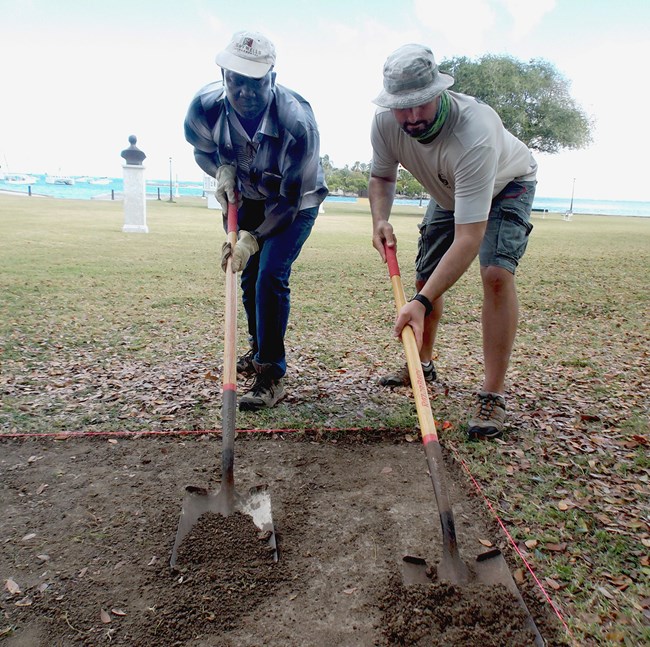
NPS photo Slave Wrecks ProjectChristiansted National Historic Site is a proud partner in the Slave Wrecks Project (SWP), an international network of researchers and institutions that combines collaborative maritime exploration and investigation with training, heritage protection, exhibits, and education to build and share new knowledge about the history of the global slave trade. SWP partners work in museums and in archives, on coastlines, and in the sea in a dynamic approach to public history that intersects with the latest in science, archaeology, anthropology, and historical research. SWP is building a global network with local and regional roots and works in a growing list of locations from Mozambique to South Africa to St. Croix, Senegal, Brazil, and Cuba. 
NPS photo In 2015, the National Park Service launched the first SWP research efforts in US territorial waters and the Western Hemisphere – a survey, inventory, and assessment of submerged resources at Buck Island National Monument, to look for two slave ships that wrecked off the island’s reefs, the Mary and the General Abercrombie. Archeologists from the NPS’ Submerged Resources Center (SRC) and the Southeast Archeological Center (SEAC), in collaboration with the Smithsonian Institution’s National Museum of African American History and Culture (NMAAHC) and George Washington University, are locating and documenting archeological sites both above and underwater associated with the historic trade of enslaved Africans. |
Last updated: April 16, 2018
